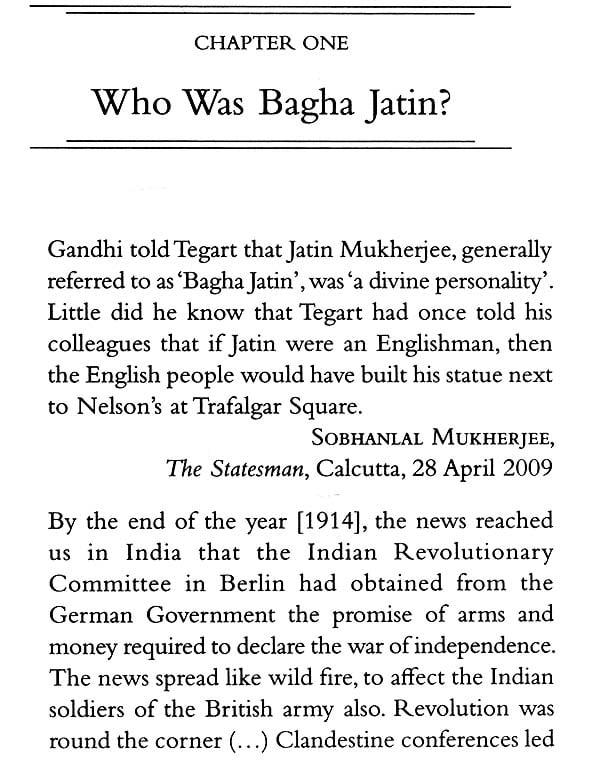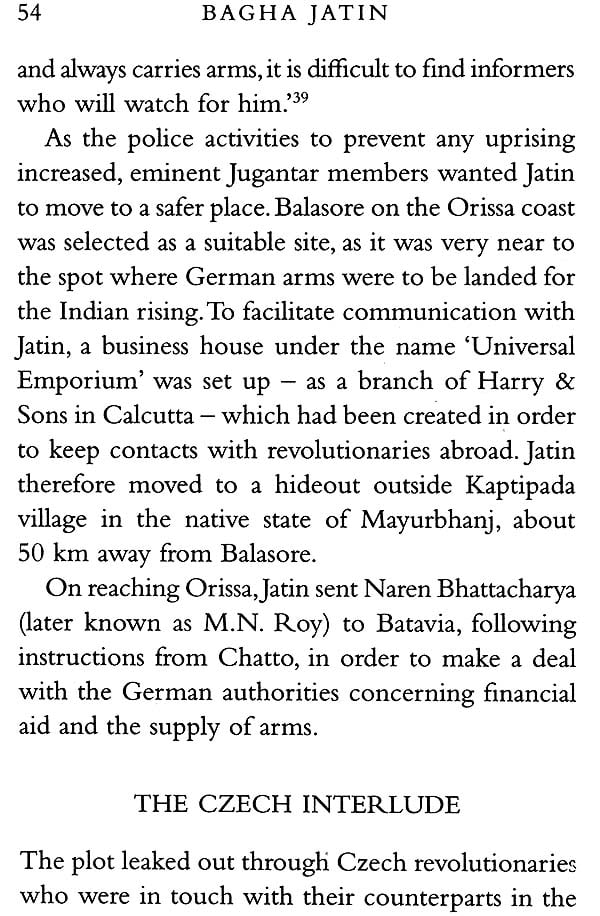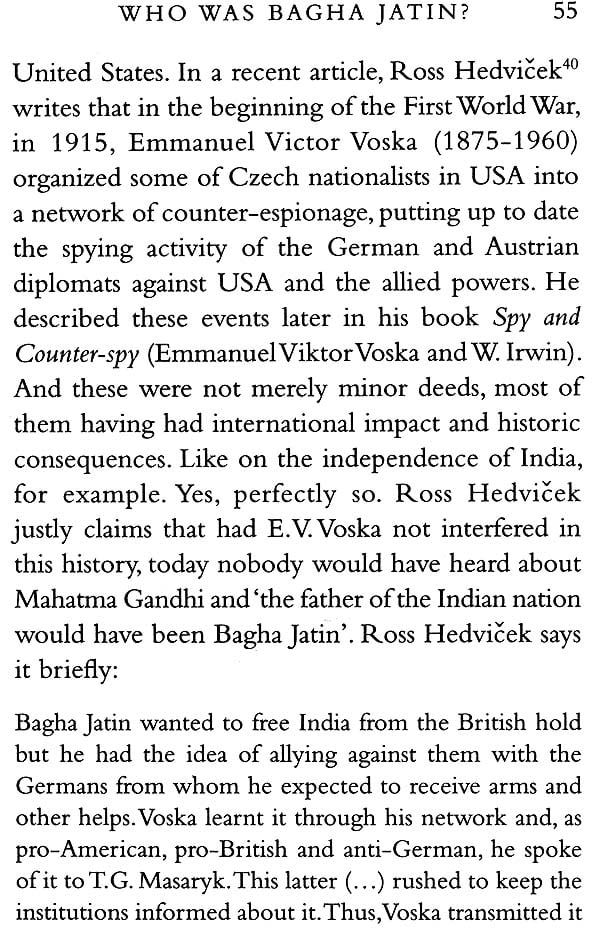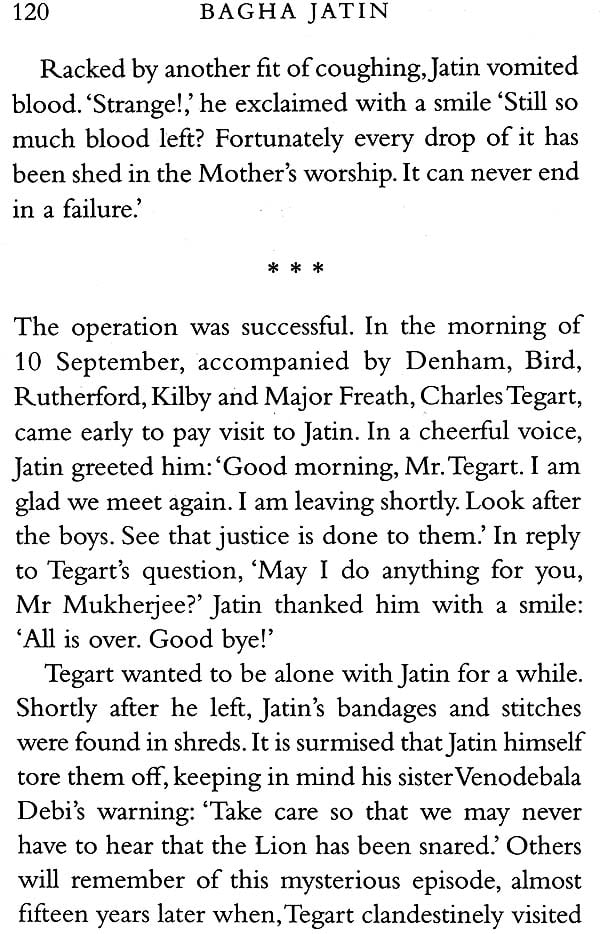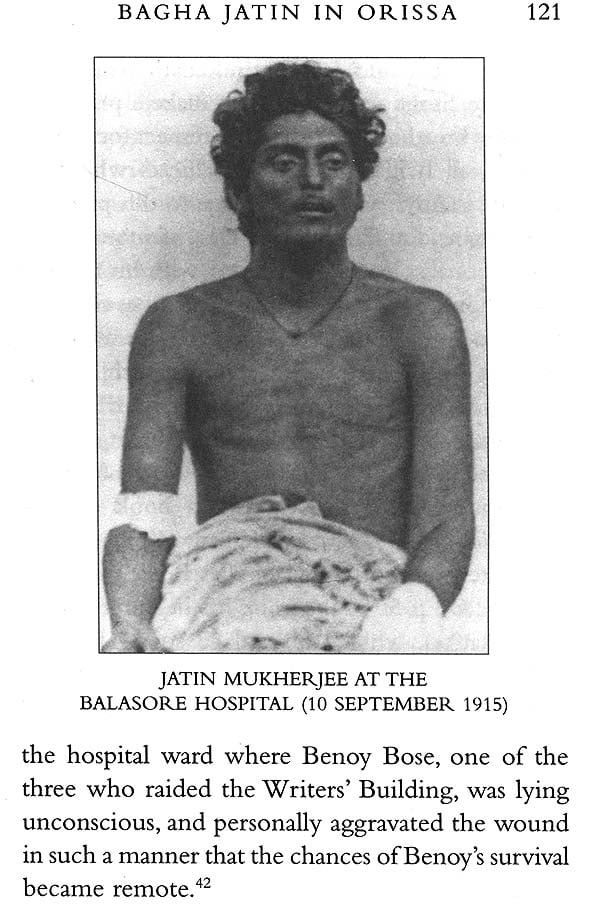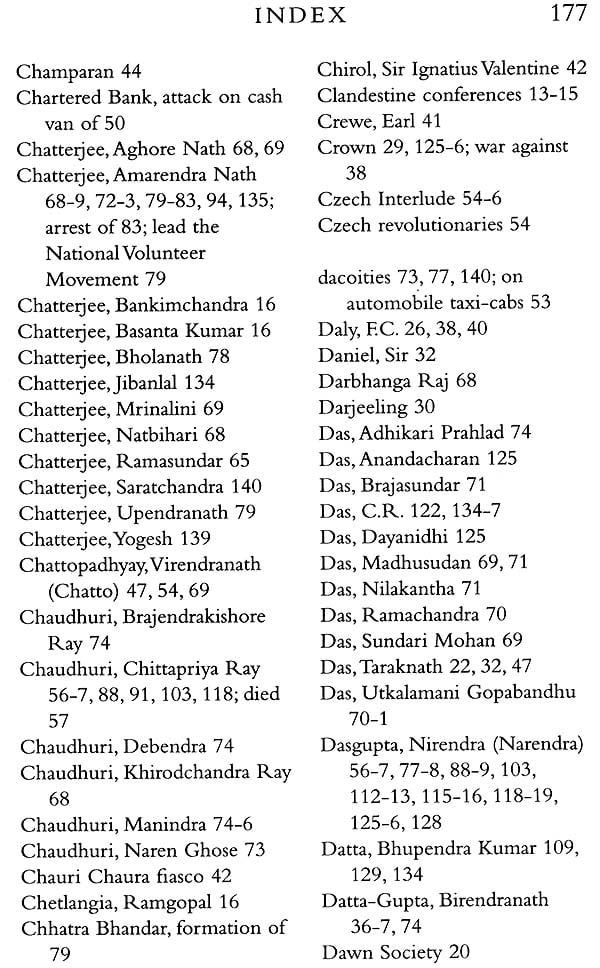
Bagha Jatin (Life in Bengal and Death in Orissa 1879-1915)
Book Specification
| Item Code: | NAN011 |
| Author: | Prithwindra Mukherjee |
| Publisher: | Manohar Publishers and Distributors |
| Edition: | 2016 |
| ISBN: | 9789350981153 |
| Pages: | 182 (21 B/W Illustrations) |
| Cover: | Hardcover |
| Other Details | 7.5 inch x 5.0 inch |
| Weight | 320 gm |
Book Description
Jatindranath Mukherjee (Bagha Jatin) was a legendary leader of the revolutionary movement in Bengal and Orissa in the early part of twentieth century. A formidable organizer and planner, right-hand man of Sri Aurobindo, founder member of Jagantar and Anushilan Samiti, Jatin realized early that it was futile for revolutionaries to fight the British Raj on their own. He established links with the Germans during the First World War, and was killed after a dramatic gunfight at Balasore on 9 September 1915.
This slim, exciting volume, full of rare insights gleaned from familial and archival sources by Jatin’s gradson, brings to the fore the portrait of indomitable courage and fortitude. A man who inspired millions across India, including Subhas Bose and Bhagat Singh, this heart- felt volume pays exemplary tribute to him.
Prithwindra Mukherjee (b. 1936) is a poet, historian, musicologist, translator and author of more than sixty books in Bengali, French and English. Based in Paris since 1966, he has received the Chevalier Arts & Letters (2009) and Chevalier Palmes Academiques (2015) from the Government of France.
This volume is one of the most inspiring accounts of militant nationalism of modern India that I have ever read. Prithwindra Mukherjee's treatment of the subject in this book is marked by sympathy and objectivity.
Divided into four chapters and an annexe, the volume brings to our attention, the career of the legend called Bagha Jatin before the readers. More importantly, as the title of the book suggests, the story unravels the lesser known aspects of the role the region played in the events that led to the sacrifice of Jatin at Balasore on 9 September 1915.
The narrative captures some of the crucial aspects of the eventful life of Bagha Jatin, the popular name of Jatindranath Mukherjee: birth in Kushtia in the Nadia district of undivided Bengal on 7 December 1879, education at Calcutta Central College, meeting with Swami Vivekananda, co-founding the Anushilan Samiti in 1900, heroic killing of a dreaded tiger in 1906 that wins him the title 'Bagha Jatin', Howrah- Shibpur Conspiracy Case in 1910-11, revolutionary activities during First World War, arms expeditions leading to the German Plot, alternately known as the Indo-German Conspiracy, and finally martyrdom at Chashakhand, Balasore in 1915.
What is noteworthy is that the book makes a host of allusions to places, institutions and personalities in Orissa that are integral to the story of Bagha Jatin. These include Utkalamani Pandit Gopabandhu Das, Sashibhushan Raychaudhury, the Sevak Dal and the Ramakrishna Mission at Puri called Sashi Niketan. Others like Naren Ghose and Bholanath Chatterjee carry out part of the mission in Sambalpur; yet others carefully prepare the network at Kaptipada and Balasore.
Prithwindra Mukherjee is a fine historian. More significantly, he approaches his subject with the imagination and sensitivity of a poet even as he remains committed to the rigors of historiography.
He also happens to be the grandson of Bagha Jatin. He has rare insights through family sources that few historians possess. He offers a balanced and many sided view of the narrative without being reductive in his conclusions.
The narrator shows us that Jatindra's influence outlived his heroic death. It would have an impact on the history of the freedom struggle including the mass movement led by Gandhi, the sacrifice by Bhagat Singh and other martyrs, the grandiose scheme of Netaji Subhas Bose was excuted out of Bagha Jatin's blueprint.
Some historians maintain that Bagha Jatin had an indirect association with Sri Aurobindo. Prithwindra refutes this view with solid evidence. In fact, he points out that Jatin took direct instructions from Sri Aurobindo, who recognized in Jatin his 'right- hand man .... A man who would belong to the front rank of humanity.'
We are indeed fortunate that we now have this story in English. The fact that Bagha Jatin gave up his life in this historic province has a great deal of cultural and spiritual significance. The tragic event brings to our mind the battle fought by Mukunda Dev, the last independent king of Orissa in Gohara Tikiri at Bhadrak, in Balasore, just as the Raibania Fort in the frontiers of Balasore has always acted as a buffer against foreign invasions.
Oriya readers would also not miss the significance of the fact that Balasore is known for legendary writers like Fakir Mohan Senapati, Radhanath Ray as well as the British administrator-cum-scholar John Beames. They and others led a movement that culminated in a cultural efflorescence in the region, subsequently kindling the fire of nationalism. Fakir Mohan's powerful stories and novels like Six Acres and a Third showed the working of colonial modernity through the play of irony and subversive narrative Voices.
It is therefore significant that Bagha Jatin fought his last battle here. In due course, the land would be made haloed by the Padayatra of Mahatma Gandhi during the Salt Satyagraha Movement to Inchudi in the same region. Bagha Jatin's last words were: 'Still bleeding? Fortunately I have sacrificed the last drop of this blood for the Mother.' Gandhi believed that 'Bagha Jatin was a divine personality'. According to M.N. Roy, the warrior 'personified ... the best of mankind.'
It is our privilege that through the pen of Prithwindra we now have an opportunity to witness this saga. Rightly learned, this story could take us beyond the current mood of cynicism and despair to the realization of a brighter destiny for the nation.
| Foreword | 7 | |
| 1 | Who was Bagha Jatin? | 13 |
| 2 | Bagha Jatin in Orissa | 65 |
| 3 | Epilogue | 133 |
| 4 | A Few Letters of Jatin Mukherjee | 144 |
| Annexe | ||
| Three Steps Leading to a thesis on Bagha Jatin | 165 | |
| Index | 175 |
